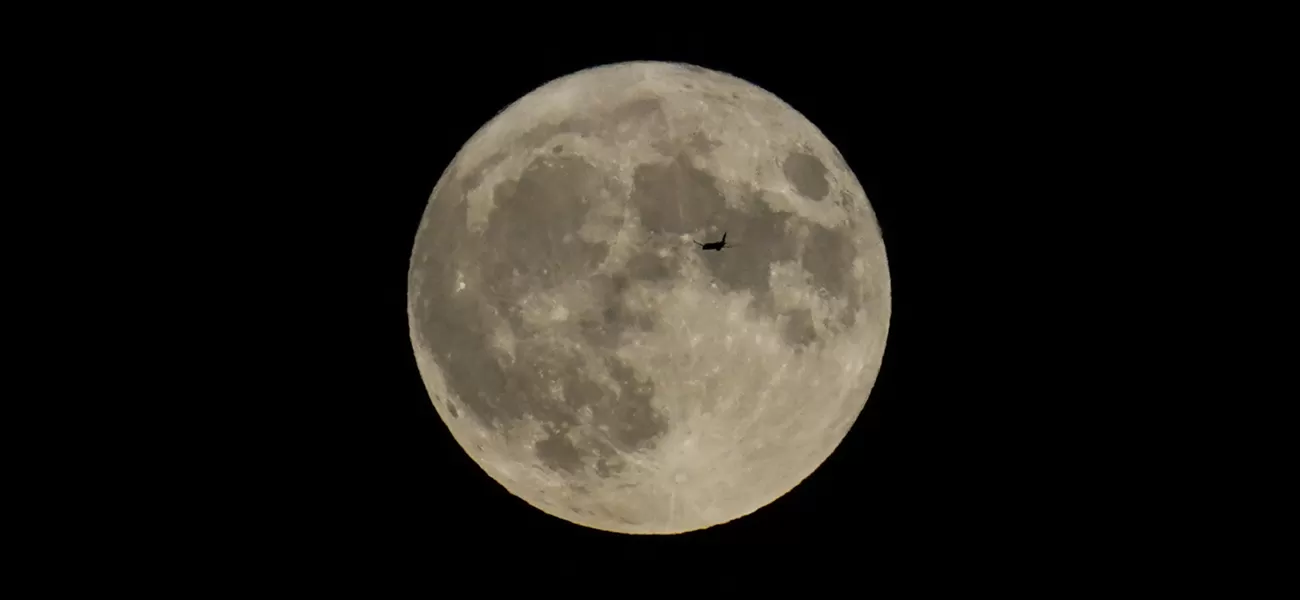Possible future base for astronauts may be underground moon cave.
A subterranean cave network may be an ideal shelter for moon researchers.
July 15th 2024.

Through extensive research and analysis, a team of scientists has made a groundbreaking discovery - a lunar cave that could potentially serve as a permanent base for astronauts on the moon. This incredible underground cave stretches for tens of meters beneath an open pit and is believed to be the first of its kind to be accessible to humans.
Located in the Sea of Tranquillity, a dark region on the near side of the moon that can be seen with the naked eye, this cave is a significant milestone in space exploration. Previous caves found on the moon lacked entry points, making them inaccessible to humans. However, this newly discovered hollowed passage lies beneath a pit about 100 meters wide and can be reached from the lunar surface.
With Nasa planning to send its first crewed mission to the moon in over 50 years, this discovery comes at an opportune time. It has long been suspected that the Sea of Tranquillity, along with 200 other pits on the moon, may have hidden tunnels beneath its surface. And now, with this new finding, those theories have been confirmed.
Leonardo Carrer, an assistant professor at the University of Trento in Italy, expressed his excitement about the discovery, saying, "For the first time, we have located and accurately mapped a cave that is actually accessible from a pit on the lunar surface. We were able to obtain the first 3D model of a part of the cave's actual shape." His colleague, Professor Lorenzo Bruzzone, added, "These caves have been theorized for over 50 years, but it is the first time ever that we have demonstrated their existence."
These underground lunar caves, also known as lava tubes, were formed billions of years ago by volcanic activity. When the ceilings of these tubes collapsed, moon pits were created. And now, with this newly discovered cave, researchers have estimated its length to be between 30-80 meters, its width around 45 meters, and it is located approximately 130-170 meters below the surface. This cave could potentially provide a safe and stable environment for human settlement on the moon.
The idea of utilizing these underground caves for human habitation is not a new one. Experts believe that constructing lunar shelters from scratch would require a considerable amount of resources and effort, making it a less viable option compared to colonizing these existing lava tubes. Professor Carrer explained, "Building a base on the surface of the moon requires highly complex engineering solutions, which may be less effective than what is already provided by nature."
The team of researchers used radar data gathered by Nasa's Lunar Reconnaissance Orbiter in 2009 for their study, and through their analysis, they have developed new models of the cave beneath the Sea of Tranquillity pit. They also believe that this cave may either be flat or inclined by around 45 degrees. However, they expect it to be longer than the portion that has been identified and modeled.
The moon's surface is harsh and hostile to human life, with extreme temperatures ranging from 127C to minus 173C and being exposed to cosmic radiation that is 150 times more powerful than Earth. However, underground caves have an average temperature of around 17C, making it a much more suitable environment for astronauts. These caves may also provide easy access to essential resources such as water ice and other minerals, making them an ideal location for human habitation.
Mahesh Anand, a professor of planetary science and exploration at the Open University, commented on the study, saying, "This work confirms the presence of hollowed structures underneath the lunar surface, which are occasionally visible from outside through the collapse or breaches in their roof. On the moon, these structures are found inside lava flows, similar to those on Earth. The future exploration of the Moon through extended human presence would require protection from the harsh environment and micrometeoroid impacts. In that context, these underground structures could provide a suitable location for habitation purposes."
In conclusion, this remarkable discovery of an underground lunar cave opens up new possibilities for human exploration and settlement on the moon. With its potential to provide a safe and stable environment, easy access to resources, and protection from the harsh lunar surface, this cave could be the key to establishing a permanent base on the moon. The future of space exploration is indeed exciting and filled with endless possibilities.
Located in the Sea of Tranquillity, a dark region on the near side of the moon that can be seen with the naked eye, this cave is a significant milestone in space exploration. Previous caves found on the moon lacked entry points, making them inaccessible to humans. However, this newly discovered hollowed passage lies beneath a pit about 100 meters wide and can be reached from the lunar surface.
With Nasa planning to send its first crewed mission to the moon in over 50 years, this discovery comes at an opportune time. It has long been suspected that the Sea of Tranquillity, along with 200 other pits on the moon, may have hidden tunnels beneath its surface. And now, with this new finding, those theories have been confirmed.
Leonardo Carrer, an assistant professor at the University of Trento in Italy, expressed his excitement about the discovery, saying, "For the first time, we have located and accurately mapped a cave that is actually accessible from a pit on the lunar surface. We were able to obtain the first 3D model of a part of the cave's actual shape." His colleague, Professor Lorenzo Bruzzone, added, "These caves have been theorized for over 50 years, but it is the first time ever that we have demonstrated their existence."
These underground lunar caves, also known as lava tubes, were formed billions of years ago by volcanic activity. When the ceilings of these tubes collapsed, moon pits were created. And now, with this newly discovered cave, researchers have estimated its length to be between 30-80 meters, its width around 45 meters, and it is located approximately 130-170 meters below the surface. This cave could potentially provide a safe and stable environment for human settlement on the moon.
The idea of utilizing these underground caves for human habitation is not a new one. Experts believe that constructing lunar shelters from scratch would require a considerable amount of resources and effort, making it a less viable option compared to colonizing these existing lava tubes. Professor Carrer explained, "Building a base on the surface of the moon requires highly complex engineering solutions, which may be less effective than what is already provided by nature."
The team of researchers used radar data gathered by Nasa's Lunar Reconnaissance Orbiter in 2009 for their study, and through their analysis, they have developed new models of the cave beneath the Sea of Tranquillity pit. They also believe that this cave may either be flat or inclined by around 45 degrees. However, they expect it to be longer than the portion that has been identified and modeled.
The moon's surface is harsh and hostile to human life, with extreme temperatures ranging from 127C to minus 173C and being exposed to cosmic radiation that is 150 times more powerful than Earth. However, underground caves have an average temperature of around 17C, making it a much more suitable environment for astronauts. These caves may also provide easy access to essential resources such as water ice and other minerals, making them an ideal location for human habitation.
Mahesh Anand, a professor of planetary science and exploration at the Open University, commented on the study, saying, "This work confirms the presence of hollowed structures underneath the lunar surface, which are occasionally visible from outside through the collapse or breaches in their roof. On the moon, these structures are found inside lava flows, similar to those on Earth. The future exploration of the Moon through extended human presence would require protection from the harsh environment and micrometeoroid impacts. In that context, these underground structures could provide a suitable location for habitation purposes."
In conclusion, this remarkable discovery of an underground lunar cave opens up new possibilities for human exploration and settlement on the moon. With its potential to provide a safe and stable environment, easy access to resources, and protection from the harsh lunar surface, this cave could be the key to establishing a permanent base on the moon. The future of space exploration is indeed exciting and filled with endless possibilities.
[This article has been trending online recently and has been generated with AI. Your feed is customized.]
[Generative AI is experimental.]
0
0
Submit Comment





